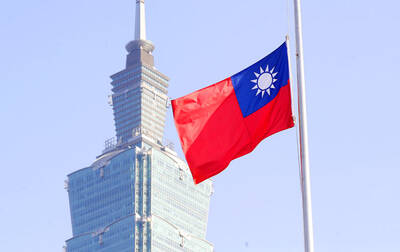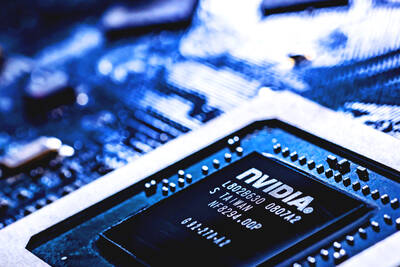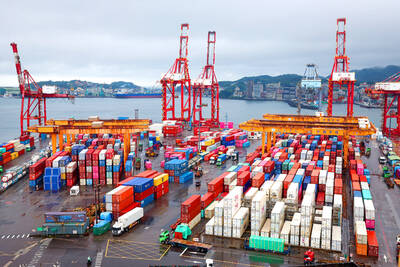Chrysler’s efforts to restructure under the watchful eye of a bankruptcy judge picked up momentum on Friday after a group of creditors dropped their objections.
The next major hurdle in the restructuring is the elimination of nearly 25 percent of the troubled automaker’s 3,200 dealerships across the US, industry observers said. The creditor group, which initially held about US$1 billion in bonds, had objected to the plan by US President Barack Obama’s administration to reduce Chrysler’s debt to help create a partnership with Italy’s Fiat.
Many of them quickly backed down after Obama publicly chastised the investment firms and hedge funds, who were largely blamed for pushing the storied automaker into bankruptcy.
NINE CREDITORS
Only nine creditors with less than US$300 million in debt retained their objections by Friday afternoon.
“After a great deal of soul-searching and quite frankly agony, Chrysler’s non-TARP [Troubled Asset Relief Program] lenders concluded they just don’t have the critical mass to withstand the enormous pressure and machinery of the US government,” their lawyer, Tom Lauria, said in a statement. “As a result, they have collectively withdrawn their participation in the court case.”
The group is identified as the Chrysler Non-TARP Lenders because the members have not received aid under the government relief program, a US$700 billion measure to stabilize the financial system.
Oppenheimer was one of three funds to back down on Friday morning.
It said it withdrew its opposition because “given the reduced number of senior creditors willing to continue to pursue an alternative,” it determined that “senior creditors can no longer reasonably expect to increase the recovery rate on the debt they hold.”
‘UNFAIR’
Lauria said the remaining creditors still consider the proposal to be unfair and contrary to basic “legal, financial and business principals” and do not intend to consent to the proposal “despite their inability to continue active opposition to the stripping of their rights in the bankruptcy process.”
Chrysler, which filed for bankruptcy protection on April 30, said it hoped to wrap up the court process in 30 days to 60 days by selling the automaker’s principal assets to a new company.
The new firm would be majority owned by the United Auto Workers union, with small stakes by the US and Canadian governments, which would contribute some US$10.5 billion to the venture.
Italian automaker Fiat would initially take a 20 percent stake in the firm that would rise to 35 percent and could reach 51 percent as early as 2013 if Chrysler is able to repay its government loans.

ELECTRONICS BOOST: A predicted surge in exports would likely be driven by ICT products, exports of which have soared 84.7 percent from a year earlier, DBS said DBS Bank Ltd (星展銀行) yesterday raised its GDP growth forecast for Taiwan this year to 4 percent from 3 percent, citing robust demand for artificial intelligence (AI)-related exports and accelerated shipment activity, which are expected to offset potential headwinds from US tariffs. “Our GDP growth forecast for 2025 is revised up to 4 percent from 3 percent to reflect front-loaded exports and strong AI demand,” Singapore-based DBS senior economist Ma Tieying (馬鐵英) said in an online briefing. Taiwan’s second-quarter performance beat expectations, with GDP growth likely surpassing 5 percent, driven by a 34.1 percent year-on-year increase in exports, Ma said, citing government

UNIFYING OPPOSITION: Numerous companies have registered complaints over the potential levies, bringing together rival automakers in voicing their reservations US President Donald Trump is readying plans for industry-specific tariffs to kick in alongside his country-by-country duties in two weeks, ramping up his push to reshape the US’ standing in the global trading system by penalizing purchases from abroad. Administration officials could release details of Trump’s planned 50 percent duty on copper in the days before they are set to take effect on Friday next week, a person familiar with the matter said. That is the same date Trump’s “reciprocal” levies on products from more than 100 nations are slated to begin. Trump on Tuesday said that he is likely to impose tariffs

HELPING HAND: Approving the sale of H20s could give China the edge it needs to capture market share and become the global standard, a US representative said The US President Donald Trump administration’s decision allowing Nvidia Corp to resume shipments of its H20 artificial intelligence (AI) chips to China risks bolstering Beijing’s military capabilities and expanding its capacity to compete with the US, the head of the US House Select Committee on Strategic Competition Between the United States and the Chinese Communist Party said. “The H20, which is a cost-effective and powerful AI inference chip, far surpasses China’s indigenous capability and would therefore provide a substantial increase to China’s AI development,” committee chairman John Moolenaar, a Michigan Republican, said on Friday in a letter to US Secretary of

‘REMARKABLE SHOWING’: The economy likely grew 5 percent in the first half of the year, although it would likely taper off significantly, TIER economist Gordon Sun said The Taiwan Institute of Economic Research (TIER) yesterday raised Taiwan’s GDP growth forecast for this year to 3.02 percent, citing robust export-driven expansion in the first half that is likely to give way to a notable slowdown later in the year as the front-loading of global shipments fades. The revised projection marks an upward adjustment of 0.11 percentage points from April’s estimate, driven by a surge in exports and corporate inventory buildup ahead of possible US tariff hikes, TIER economist Gordon Sun (孫明德) told a news conference in Taipei. Taiwan’s economy likely grew more than 5 percent in the first six months